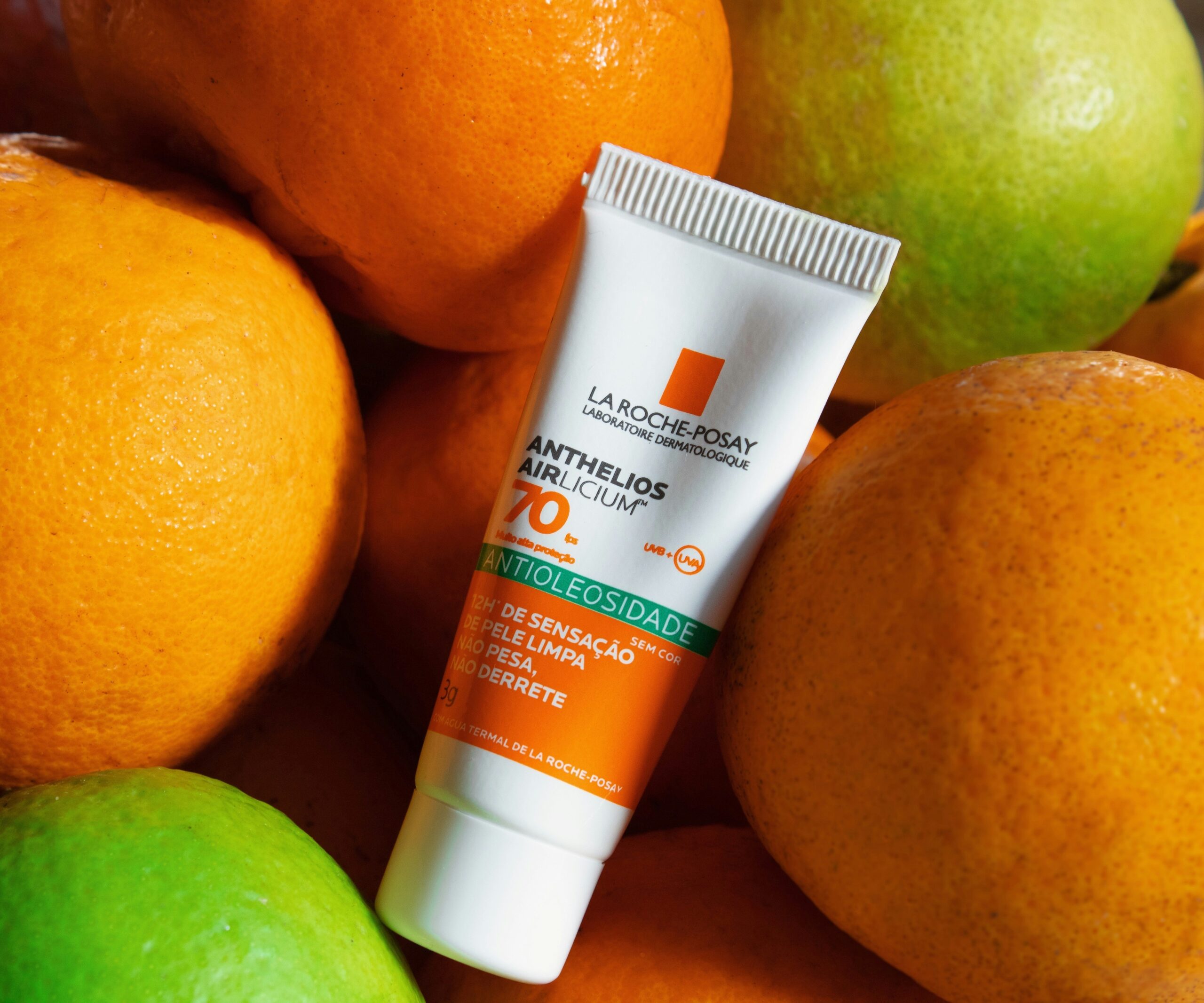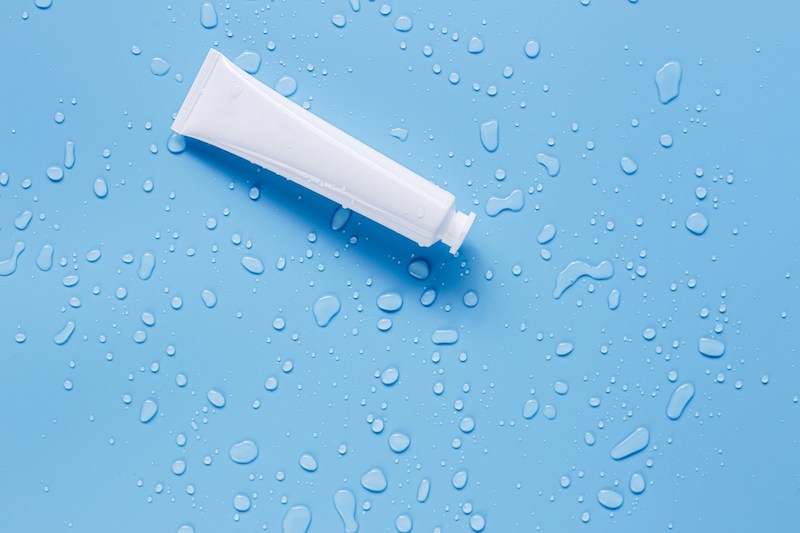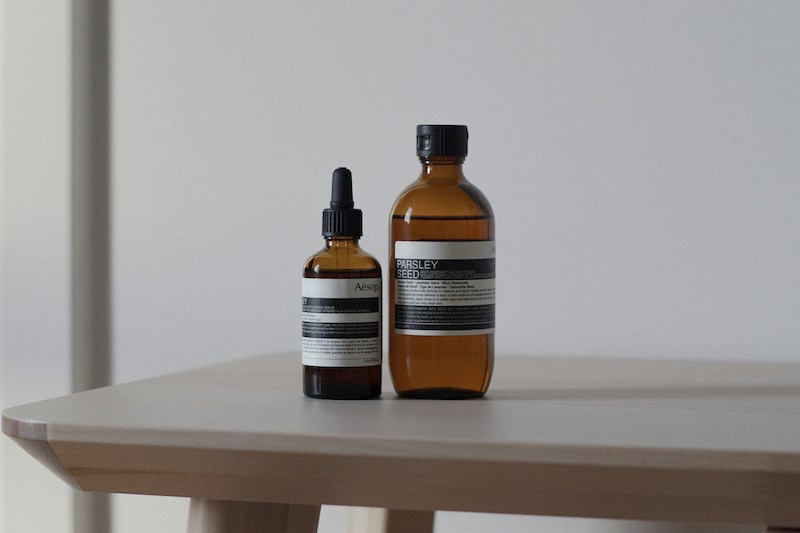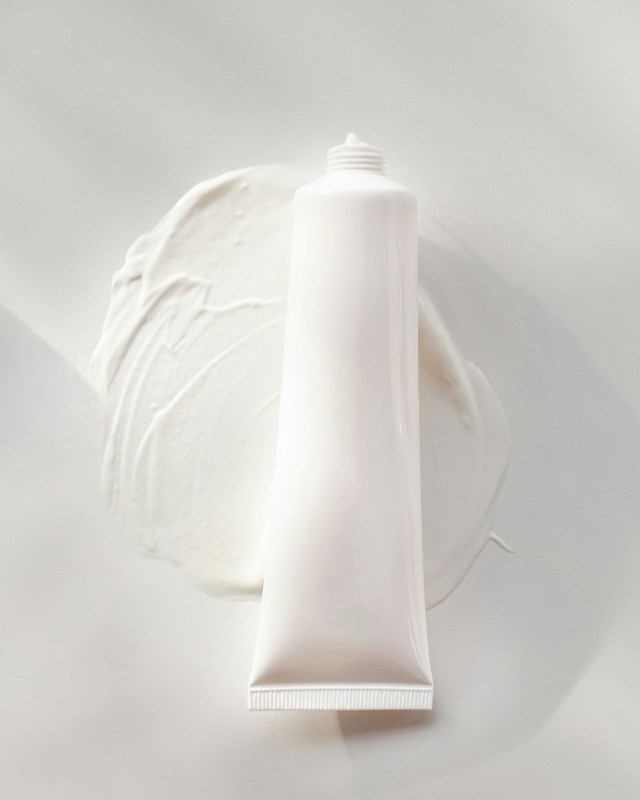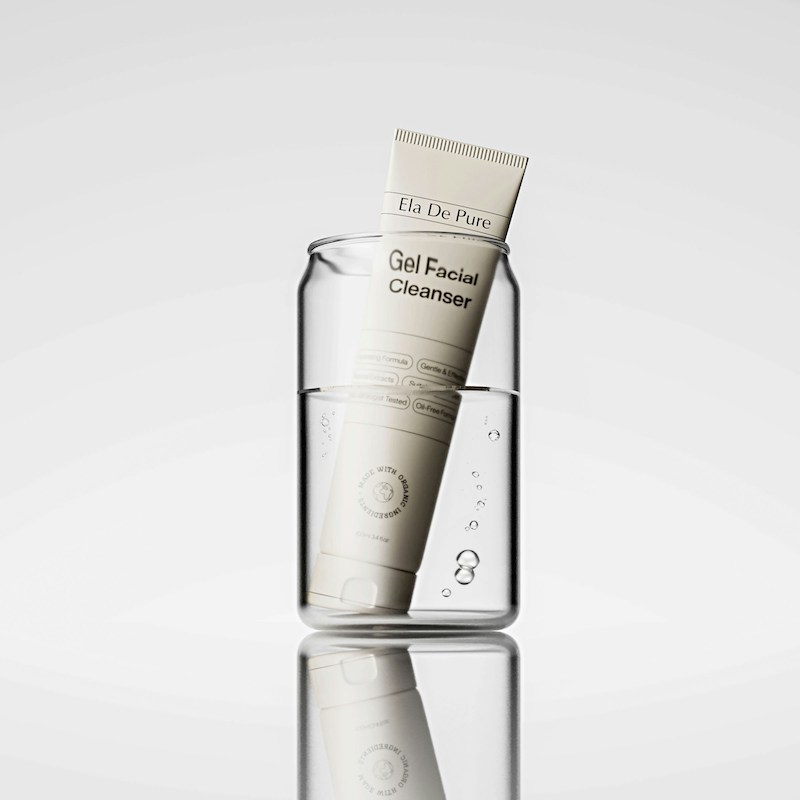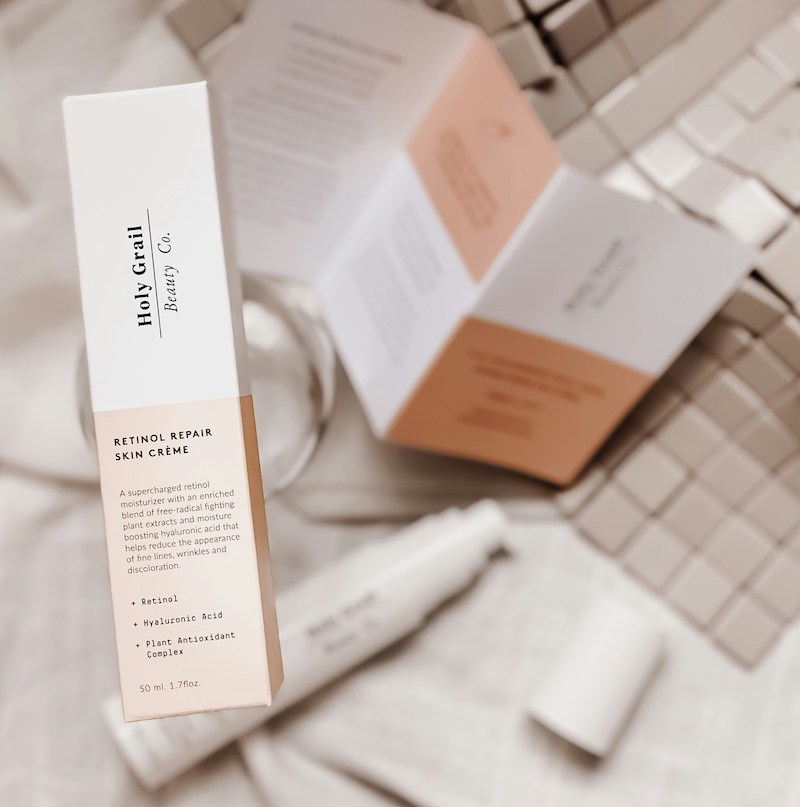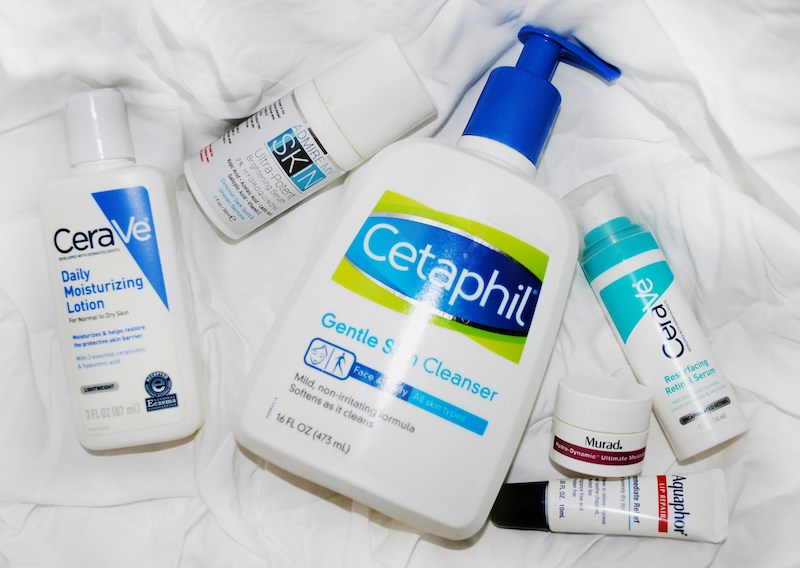Skincare can feel overwhelming, with an endless array of products, routines, and conflicting advice. The first step in developing a personalized skincare routine is understanding your skin type—it’s the foundation that will guide you on your journey to healthier skin.
In this post, we’ll take a closer look at:
• The different skin types
• How to determine your own skin type
• Identifying specific concerns based on your skin’s needs
• The right approach and products tailored to your skin
• And the most common questions
Today, we’re going on a skincare journey—one that is unique for each of us. So, without further ado, let’s get started!
1. The Importance of Understanding Skin Types
First, let’s cover the basics.
Your skin type serves as the blueprint for your skincare routine. Before diving into more complex topics, it’s essential to understand the different skin types and their characteristics.
Oily Skin
Oily skin is characterized by an overproduction of sebum, the skin’s natural oil. This excess sebum can lead to a shiny complexion, enlarged pores, and a tendency toward acne and blackheads. People with oily skin often notice that their T-zone (forehead, nose, and chin) is particularly affected, as these areas produce the most oil. The good news? Oily skin tends to develop fewer wrinkles over time.
Dry Skin
Dry skin occurs when the skin produces insufficient sebum, leading to a lack of moisture and a weakened skin barrier. It often feels tight, rough, and may show signs of flakiness or redness. Those with dry skin are also more prone to fine lines and premature aging, as the skin lacks the necessary hydration to maintain elasticity.
Sensitive Skin
Sensitive skin is highly reactive to environmental factors and skincare products, often resulting in redness, itching, burning sensations, or excessive dryness. This skin type is more likely to experience irritation from harsh ingredients, fragrances, or extreme weather conditions, making it essential to choose gentle, soothing formulations.
Combination Skin
Combination skin is a mix of different skin types across the face. The most common pattern is an oily T-zone (forehead, nose, and chin), while the cheeks and the area around the eyes may be normal or dry. Managing combination skin requires a balanced approach that caters to both hydration and oil control.
2. What Skin Type Do I Have?
Okay, now you know the different skin types. But you might be wondering: It’s great to understand them, but how do I determine my own skin type?
Luckily, there’s a simple way to find out. This method goes by many names, but here, we’ll call it “The Bare-Faced Test.”
Step 1: Cleanse Your Face
Wash your face with a gentle, fragrance-free cleanser to remove dirt, oil, and makeup. Pat your skin dry with a clean towel.
Step 2: Wait for 30–60 Minutes
Do not apply any skincare products—no moisturizer, toner, or serums. Let your skin rest and return to its natural state. Avoid touching your face during this time.
Step 3: Observe Your Skin
After about an hour, examine your face in natural light. Pay attention to key areas: forehead, nose, cheeks, and chin.
Step 4: Identify Your Skin Type
• Oily Skin → Your face appears shiny, especially in the T-zone (forehead, nose, and chin). Your skin may feel greasy to the touch.
• Dry Skin → Your skin feels tight, rough, or flaky, particularly around the cheeks and mouth.
• Combination Skin → Your T-zone is oily, but your cheeks feel dry or normal.
• Normal Skin → Your skin feels balanced—not too dry or oily—and has a smooth, soft texture.
• Sensitive Skin → You experience redness, irritation, or a slight burning sensation.
Additional Observations
• Pay close attention to any signs of sensitivity or redness, as these could indicate reactive areas that require extra care.
• Assess the size of your pores. Enlarged pores, particularly in the T-zone, are often a sign of oily skin.
Now that you’ve identified your skin type, you have a solid foundation for choosing the right skincare routine. However, keep in mind that external factors like climate, diet, and lifestyle also affect your skin’s behavior. If you have persistent concerns or specific skin issues, consulting a dermatologist can provide personalized guidance.
3. Identifying Specific Skin Concerns
Now that we know our skin type, the next step is to identify the specific concerns that make a well-structured skincare routine necessary.
You see, our skin type is just the foundation of our skincare routine—it determines for example how much sebum (our skin’s natural oil) is produced and how naturally dry or sensitive our skin is.
However, skin concerns are the issues we actively want to address—problems that we can influence through skincare products, diet, and lifestyle. Both the framework (our skin type) and our skin concerns determine which products we should use—and which ones we should avoid.
Here is an overview of the most common skin concerns:
Acne
Acne is a widespread yet complex concern that can appear in different forms. Understanding its types helps in choosing the right approach to treatment.
1. Comedonal Acne (Non-Inflammatory)
Comedones are blocked hair follicles that appear as:
• Blackheads (open comedones) → These occur when the clogged pore is exposed to air, causing oxidation and a darkened appearance.
• Whiteheads (closed comedones) → These remain beneath the skin’s surface, forming small, white bumps.
2. Inflammatory Acne
This type of acne involves redness, swelling, and deeper breakouts:
• Papules → Small, red, inflamed bumps without pus.
• Pustules → Similar to papules but filled with white or yellowish pus.
• Nodules → Large, painful lumps deep within the skin.
• Cysts → The most severe form, filled with pus and often leading to scarring.
Causes of Acne
• Excess oil production
• Bacteria (Propionibacterium acnes)
• Hormonal fluctuations
• Clogged pores due to dead skin cells
• Diet and lifestyle factors (these are probably the most important factors)
Wrinkles & Aging
As we age, our skin undergoes natural changes.
1. Fine Lines & Wrinkles
These appear due to a loss of collagen and elastin, the proteins responsible for skin firmness. Dehydration and repeated facial expressions can also contribute to their formation.
2. Loss of Elasticity
With age, the skin produces less collagen and hyaluronic acid, leading to sagging or drooping, particularly around the jawline, under the eyes, and on the neck.
3. Sun Damage
Excessive UV exposure can cause:
• Age spots (sun spots)
• Uneven skin tone
• Loss of skin firmness
Using sunscreen daily is the best way to prevent premature aging and maintain a youthful glow.
Hyperpigmentation
Hyperpigmentation is one of the most common skin concerns and is characterized by dark patches or spots on the skin. To address it effectively, we need to consider its causes and different types.
Causes of Hyperpigmentation:
• Sun exposure → Triggers increased melanin production, leading to sunspots.
• Inflammation → Acne, eczema, or other irritations can cause post-inflammatory hyperpigmentation (PIH).
• Hormonal changes → Common in pregnancy, due to birth control, or certain medical conditions (e.g., melasma).
Types of Hyperpigmentation:
• Melasma → Dark, irregular patches, often on the face, triggered by hormones and sun exposure.
• Sunspots (Lentigines) → Small, dark patches caused by prolonged sun exposure.
• Post-Inflammatory Hyperpigmentation (PIH) → Dark marks left behind after acne, burns, or other skin injuries.
Sensitivity
Sensitive skin is one of the most delicate skin types, often reacting to environmental factors, skincare products, and even stress. If you suspect that you have sensitive skin, recognizing its key characteristics can help you build a skincare routine that prevents irritation, strengthens your skin barrier, and maintains a healthy complexion.
Signs of Sensitive Skin
1. Frequent Redness → Your skin flushes easily due to heat, skincare products, or friction, often appearing blotchy or irritated.
2. Burning or Tingling → You experience stinging sensations when using products with fragrances, alcohol, essential oils, or strong active ingredients like retinol or AHAs (alpha hydroxy acids).
3. Dryness & Flakiness → A compromised skin barrier leads to moisture loss, causing tightness, flaky patches, and an increased risk of irritation.
4. Reactions to Skincare & Makeup → Sensitive skin is prone to negative reactions from certain ingredients, often resulting in redness, rashes, or breakouts.
5. Reactions to Weather & Pollution → Cold, heat, wind, and pollution can trigger flare-ups, dryness, or sensitivity spikes.
6. Breakouts or Rashes → While not necessarily acne-prone, sensitive skin may react with small breakouts, rashes, or eczema-like symptoms after exposure to irritants.
7. Visible Capillaries → Fragile blood vessels, especially on the cheeks and around the nose, can make the skin appear permanently flushed or blotchy.
4. Different Products and Approaches for Each Skin Type
Now that we’ve covered the basics, it’s time for the most important part: figuring out what your skincare routine might be missing and how you can improve it.
For each skin type and concern, I’ll share product recommendations that I personally like and find effective. But remember: don’t introduce everything at once! Your skin needs time to adjust to new ingredients. Start slow and be patient.
Essential Products for Every Skin Type
Regardless of your skin type, these three products should always be part of your routine:
• Sunscreen (SPF 30+) → Protects against premature aging, hyperpigmentation, and sun damage.
• pH-Balanced Gentle Cleanser → Maintains the skin’s natural barrier and prevents irritation.
• Lightweight Moisturizer → Hydrates the skin without clogging pores.
Oily Skin
Oily skin, which produces excess sebum, needs lightweight, oil-free, and mattifying products to help control shine and prevent breakouts. The right ingredients can regulate oil production while keeping the skin healthy.
Key Ingredients for Oily Skin
• Salicylic Acid (BHA) → A powerful exfoliant that penetrates deep into pores, dissolving excess oil and preventing acne.
• Niacinamide (Vitamin B3) → Helps regulate sebum production, reduces redness, and evens out skin tone.
• Glycolic Acid (AHA) → Gently exfoliates the skin’s surface, promoting a smoother complexion and reducing excess oil.
• Tea Tree Oil → Known for its anti-bacterial and anti-inflammatory properties, making it ideal for acne-prone oily skin.
• Lightweight, Oil-Free Moisturizers → Even oily skin needs hydration! Look for gel-based or water-based formulas that absorb quickly without feeling greasy.
Important Tips for Oily Skin
• Choose “non-comedogenic” and “oil-free” products – These won’t clog pores or cause breakouts.
• Avoid harsh, alcohol-based cleansers – Over-stripping the skin can trigger more oil production, making things worse.
• Use blotting papers throughout the day – A quick way to absorb excess oil without disrupting your makeup or skincare.
• Exfoliate regularly (but not too often!) – 2–3 times per week with BHA (Salicylic Acid) or AHA (Glycolic Acid) to keep pores clear.
If you stick to the right products and stay consistent, oily skin can become more balanced and less prone to breakouts over time.
Dry Skin
When selecting skincare products for dry skin, focus on ingredients that provide deep hydration, strengthen the skin barrier, and restore moisture levels. Dry skin tends to lose water quickly, so using products that lock in hydration is essential.
Key Ingredients for Dry Skin
• Hyaluronic Acid → A powerful humectant that attracts and retains water, ensuring long-lasting hydration and a plumper skin appearance.
• Shea Butter → A rich emollient that deeply nourishes the skin and helps soothe dryness or irritation.
• Aloe Vera → Known for its cooling and anti-inflammatory properties, it helps reduce irritation and replenish moisture.
Additionally, ceramides and glycerin play a crucial role in preventing dehydration and are essential for maintaining a healthy skin barrier. These ingredients are not only important for dry skin but beneficial for all skin types.
Sensitive Skin
When choosing skincare products for sensitive skin, it’s essential to prioritize gentle, soothing ingredients that minimize the risk of irritation. Look for products labeled hypoallergenic, fragrance-free, and free from harsh chemicals or alcoholsto reduce the likelihood of triggering a reaction.
Key Ingredients for Sensitive Skin
• Chamomile → Known for its anti-inflammatory and calming properties, chamomile helps soothe redness and irritation.
• Aloe Vera → Provides gentle hydration and has soothing effects on inflamed or reactive skin.
• Cucumber Extract → A natural ingredient with cooling and anti-irritant properties, which can help calm sensitive skin.
• Hyaluronic Acid → A highly effective humectant that retains moisture without clogging pores or causing irritation.
• Niacinamide (Vitamin B3) → Helps reduce inflammation, strengthens the skin barrier, and promotes a more even skin tone.
Additional Considerations for Sensitive Skin
• Ceramides and Glycerin → Strengthen the skin’s natural barrier and prevent moisture loss, essential for keeping sensitive skin balanced.
• Hypoallergenic Formulations → Look for products specifically labeled hypoallergenic, as they are designed to reduce the risk of allergic reactions.
• Fragrance-Free Products → Fragrance is a common irritant for sensitive skin, so avoiding scented products can help prevent irritation.
Combination Skin
Combination skin requires a balanced approach, as it involves both oily and dry areas. The key is to find products that hydrate the skin without making oily zones worse while also providing nourishment to drier regions.
This skin type can be tricky to manage because it needs sufficient hydration but also ingredients that regulate sebum production. The best approach is to use a combination of exfoliating and hydrating ingredients.
Recommended Ingredients for Combination Skin
• Glycolic Acid (AHA) → Gently exfoliates the skin’s surface, helping to remove dead skin cells and regulate oil production.
• Hyaluronic Acid → Provides deep hydration without clogging pores, ensuring that drier areas remain moisturized.
• Niacinamide (Vitamin B3) → Balances sebum production, reduces inflammation, and strengthens the skin barrier.
Important Considerations for Combination Skin
• Avoid heavy, oil-based products, as they can clog pores in oily areas.
• Stick to lightweight, oil-free, and pH-balanced cleansers to maintain a healthy skin barrier.
• Consider using different products for different areas—for example, a mattifying product on the T-zone and a richer moisturizer on dry areas.
Acne-Prone Skin
For acne-prone skin, the goal is to target the root causes of acne, such as excess oil production, clogged pores, and bacterial overgrowth, while also promoting healthy skin renewal. Many of the recommended ingredients for acne are similar to those used for oily skin.
Key Ingredients for Acne-Prone Skin
• Salicylic Acid (BHA) → Penetrates deep into pores to dissolve excess oil and clear out blackheads and breakouts.
• Glycolic Acid (AHA) → Gently removes dead skin cells, preventing clogged pores and improving skin texture.
• Benzoyl Peroxide → Kills acne-causing bacteria and reduces inflammation. Start with a lower concentration (2.5–5%) to minimize irritation.
Additional Tips for Acne-Prone Skin
• Use an oil-free, non-comedogenic moisturizer to maintain hydration without clogging pores.
• Avoid harsh scrubs or over-exfoliating, as this can damage the skin barrier and trigger more breakouts.
• Introduce new active ingredients gradually to prevent excessive dryness or irritation.
Mature Skin
Mature skin benefits from ingredients that hydrate, firm, and address signs of aging. The focus should be on nourishing the skin, maintaining moisture levels, and promoting collagen production to keep the skin looking healthy and radiant.
Key Ingredients for Mature Skin
• Retinoids (Retinol, Tretinoin) → Stimulates collagen production, reduces fine lines, and improves overall skin texture. Start with a low concentration to allow your skin to adjust and minimize irritation.
• Hyaluronic Acid → A powerful hydrator that plumps the skin, reducing the appearance of fine lines and wrinkles.
• Vitamin C → A potent antioxidant that brightens the skin, evens out skin tone, and protects against environmental damage.
• Alpha-Hydroxy Acids (AHAs) → Ingredients like glycolic acid or lactic acid gently exfoliate the skin, promoting a smoother, more radiant complexion.
Important Considerations for Mature Skin
• When using retinoids, be patient—your skin needs time to adjust. Always start slowly and research how to incorporate them properly into your routine.
• Sunscreen is essential when using active ingredients like retinol or AHAs, as they can make the skin more sensitive to the sun.
Hyperpigmentation
When dealing with hyperpigmentation, the goal is to target melanin production, encourage skin renewal, and prevent further discoloration.
Key Ingredients for Hyperpigmentation
• Vitamin C → A powerful antioxidant that helps brighten skin, even out tone, and reduce dark spots.
• Niacinamide (Vitamin B3) → Helps fade existing discoloration and prevents new dark spots from forming.
• Sunscreen (Broad-Spectrum SPF 30+) → The most important step in preventing and treating hyperpigmentation. Without sun protection, dark spots will continue to develop and worsen over time.
The Role of Sunscreen in Preventing Hyperpigmentation
• Daily sunscreen use is crucial—not just for hyperpigmentation, but for overall skin health.
• UV exposure worsens pigmentation issues, so applying SPF every morning (even on cloudy days) is essential.
• Sunscreen is important for all skin tones, as hyperpigmentation can affect every complexion.
General Skincare Advice
Before using any new skincare product, take the time to:
• Read the product description and instructions carefully to ensure it’s suitable for your skin.
• Research proper usage, especially for active ingredients like retinol, AHAs, and Vitamin C, which require careful introduction into your routine.
• Perform a patch test → Apply a small amount of the product to a discreet area (e.g., behind the ear or on the inner forearm) and wait 24–48 hours to check for any allergic reactions before applying it to your face.
5. Most Common Questions and Mistakes
1. Can I have more than one skin type?
Yes! Many people have combination skin, meaning some areas (like the T-zone) tend to be oily, while others (like the cheeks) are dry or normal.
2. Is sensitive skin a skin type or a condition?
Sensitive skin is not a fixed skin type but rather a skin characteristic. Any skin type (oily, dry, normal, or combination) can be sensitive due to genetics, allergies, or a weakened skin barrier.
3. Can my skin type change over time?
Absolutely! Factors such as hormonal shifts, aging, climate, stress, diet, and medications can alter your skin type. For example, oily skin may become drier with age, or dry skin may become more sensitive due to environmental changes.
4. How do I know if my skincare routine is wrong for my skin type?
If your skincare routine isn’t suited to your skin type, you may notice:
• Breakouts (from overly rich or irritating products)
• Excessive dryness or flakiness (from harsh cleansers or over-exfoliation)
• Redness and irritation (a sign of sensitivity or a damaged skin barrier)
• Increased oiliness (possibly from over-stripping the skin, leading to more sebum production)
If you experience any of these issues, try simplifying your routine and introducing new products gradually to see what works best.
5. Can drinking water change my skin type?
Drinking enough water is essential for overall health and can help maintain hydration, but it won’t change your skin type. Proper skincare, a balanced diet, and external hydration (like moisturizers) are necessary to support skin health.
6. Is acne only a problem for oily skin?
No! Acne can affect any skin type—even dry or sensitive skin. While excess oil production can contribute to breakouts, other factors like hormones, clogged pores, inflammation, and diet play a major role in acne development.
7. Do I need to exfoliate if I have dry or sensitive skin?
Yes, but gently. Exfoliation helps remove dead skin cells, allowing better absorption of skincare products. However, people with dry or sensitive skin should use mild exfoliants like lactic acid or polyhydroxy acids (PHAs) instead of harsh scrubs or strong AHAs/BHAs.
6. Final Thoughts
Your skin type isn’t fixed—it can change over time due to factors like age, climate, lifestyle, and hormones. The key to healthy, balanced skin is understanding its needs, choosing the right products, and adjusting your routine as necessary.
If you found this guide helpful, I’d love to hear your thoughts! What’s your skin type? Have you ever struggled to identify it? Share your experience in the comments below!
For more skincare tips, subscribe to my newsletter and stay updated on the latest skincare trends and expert advice.
Looking for product recommendations tailored to your skin type? Check out my latest skincare guides for in-depth reviews and expert insights!


